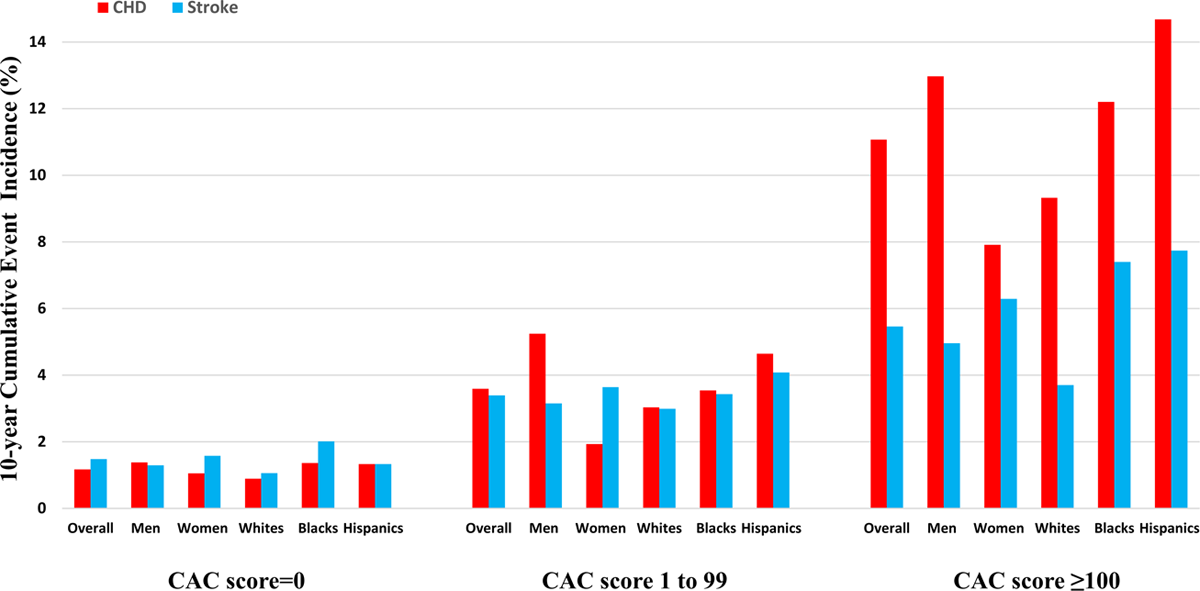CT Scans for Arterial Plaque Better Predictor for Heart Attack Than Stroke
Across racial and gender groups, CT scans that measure coronary artery calcium can more accurately predict the 10-year risk for heart attack.
CT scans of calcified plaque in the arteries of the heart can do a better job of predicting whether a patient will have a heart attack than if he or she will have a stroke, new research has revealed.
The more calcified plaque collects in the arteries, the more visible in becomes on a cardiac CT scan. In a study published Aug. 18 in Circulation: Cardiovascular Imaging, investigators from the University of Texas Southwestern Medical Center examined how well the coronary artery calcium (CAC) score gleaned from these scans can forecast whether a patient will experience a heart attack or stroke within 10 years.
What they found is a greater predictive value with heart attack, said senior author Parag Joshi, M.D., cardiologist and assistant professor of internal medicine.
Related Content: AI Start-Up Receives FDA Clearance for Comprehensive CT Stroke Package
“In our study, there was a two-fold greater risk of heart attack than stroke at CAC levels at or above 100,” he said. “That held true for black, white, and Hispanic men and women.”
These results, Joshi said, could help providers decide how aggressively to treat patients who have never have a major cardiac event, but who also have other risk factors, such as high blood pressure or high cholesterol.
Ten-year cumulative incidence of atherosclerotic cardiovascular disease (ASCVD), coronary heart disease (CHD), and stroke events across coronary artery calcium (CAC) score categories. The 10-year cumulative incidence of ASCVD, CHD, and stroke events increased across CAC score categories in the overall cohort and all sex/race groups. The increase in CHD incidence across CAC categories was relatively higher compared with stroke incidence for all participant groups. Courtesy: Circulation: Cardiovascular Imaging

The team’s findings were based on the evaluation of CT scans from 7,042 participants culled from two large studies – the Multi-Ethnic Study of Atherosclerosis and the Dallas Heart Study. Based on those images, they divided the patients by the American Heart Association and American College of Cardiology’s calcium risk categories: 0, 1-99, and 100 and above. They also sub-divided the participants by sex and race in order to calculate the different risk levels.
Based on their analysis, the team found the risk for a heart attack was twice as high than a stroke for individuals with CAC scores greater than 100. For men in this group, the overall 10-year heart attack risk was 12 percent – slightly higher at 14 percent for Hispanic men – and it was 8 percent for women. Stroke risk in this group remained below 8 percent for all groups, but it was higher among women, black, and Hispanic participants.
For individuals in the 1-99 CAC score group, the risk for both heart attack and stroke hovered below 6 percent. But, women in this cohort had a greater stroke risk while men had a higher risk for heart attack. Among individuals with a 0 score, the 10-year risk for heart attack or stroke was less than 2 percent.
It is possible, Joshi’s team contended, that providers could use these findings from CT scans to inform their decisions about whether to place a patient on statin drugs when the choice is not clear-cut based on other factors, such as smoking history, blood pressure, or cholesterol.
“If you think your patient should be on a statin, and your patient does not want to take it, this can be a good arbitrator for that,” he said. “Our findings also highlight some of the nuance between heart attack risk and stroke risk and how our patients might consider those two risks in their decision making.”
This study is the first to compare the predictive value for heart attack and stroke risks. And, according to Leslee Shaw, Ph.D., professor of health services research in radiology in the Dalio Institute of Cardiovascular Imaging at Weill Cornell Medicine, the data is sufficiently robust to beneficial impact clinical care.
“The current report represents an important validation of prior prognostic results using CAC,” Shaw said in an accompanying editorial. “The comparison of coronary heart disease versus stroke risk based on CAC findings adds novelty to this report and represents important information to enhance clinical decision making regarding asymptomatic screening for atherosclerotic cardiovascular disease.”
What is the Best Use of AI in CT Lung Cancer Screening?
April 18th 2025In comparison to radiologist assessment, the use of AI to pre-screen patients with low-dose CT lung cancer screening provided a 12 percent reduction in mean interpretation time with a slight increase in specificity and a slight decrease in the recall rate, according to new research.
The Reading Room: Racial and Ethnic Minorities, Cancer Screenings, and COVID-19
November 3rd 2020In this podcast episode, Dr. Shalom Kalnicki, from Montefiore and Albert Einstein College of Medicine, discusses the disparities minority patients face with cancer screenings and what can be done to increase access during the pandemic.
Can CT-Based AI Radiomics Enhance Prediction of Recurrence-Free Survival for Non-Metastatic ccRCC?
April 14th 2025In comparison to a model based on clinicopathological risk factors, a CT radiomics-based machine learning model offered greater than a 10 percent higher AUC for predicting five-year recurrence-free survival in patients with non-metastatic clear cell renal cell carcinoma (ccRCC).
Could Lymph Node Distribution Patterns on CT Improve Staging for Colon Cancer?
April 11th 2025For patients with microsatellite instability-high colon cancer, distribution-based clinical lymph node staging (dCN) with computed tomography (CT) offered nearly double the accuracy rate of clinical lymph node staging in a recent study.